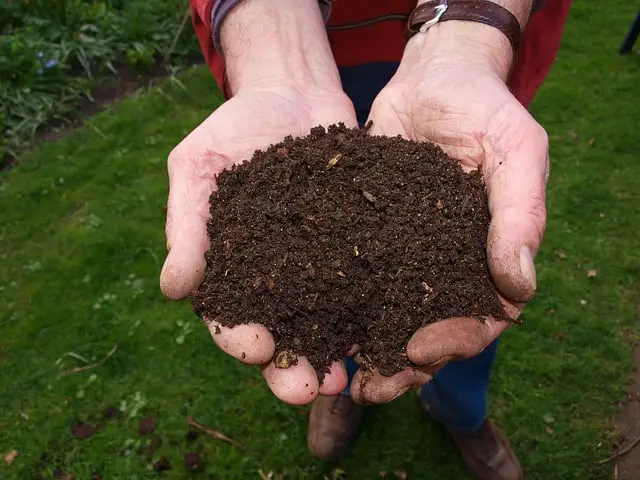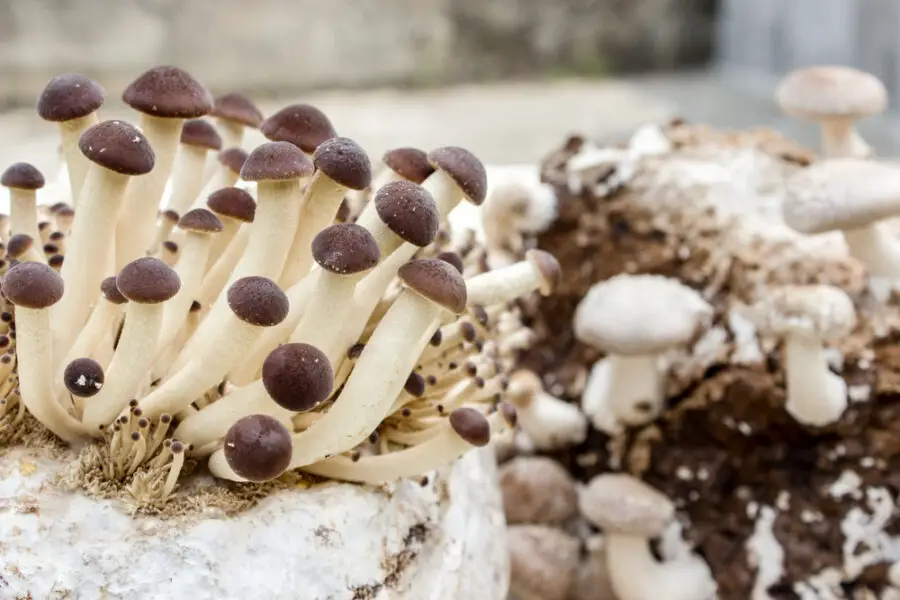Mushroom fruiting is triggered by conditions that mimic the natural environment in which mushrooms fruit. This includes the correct lighting, fresh air exchange, humidity, and more.
Do you want to learn more about the mushroom fruiting process? Or are you looking to trigger mushroom fruiting yourself? Keep reading to learn all about what triggers mushroom fruiting!
Why does light trigger mushroom fruiting?
Mushrooms can’t photosynthesize- that’s not why they need light. Rather, light tells fungi that it is time to start fruiting.
In their natural habitats, light would indicate to a fungus that it has reached the outside of its substrate. Where the light hits the substrate is a good place for the fungus to produce a fruit body.
Most of the organism exists underground- the fruit body can be thought of as the “tip of the iceberg”. Light tells the underground mycelium that it is now at the surface and can start fruiting.
What kind of light do mushrooms need to fruit?
Most kinds of light work if you’re growing mushrooms yourself, whether that’s fluorescent bulbs or indirect sunlight.
If you’re using indirect sunlight, you have to rotate your chamber so all sides get the same amount of sun or else only one side will fruit. Rotating your chamber produces the highest yield.
If you’re using an artificial light, it is common to do 12 hour cycles of the lights being on and then off to simulate the wild. Some people argue that you don’t need a period of darkness at all to induce fruiting, and leave their lights on 24/7.
Why does fresh air exchange trigger mushroom fruiting?
Mycelium know to create fruit bodies when there are lower levels of CO2. This is because in the natural world, when the mycelium reaches the surface, there will be more fresh air than there was underground.
Remember, most of the mushroom is underground. Fruiting occurs when the mycelium reaches the surface.
Home- or farm-grown mushrooms need a lot of clean fresh air (without compromising humidity). Fresh air also helps avoid bacteria and mold.
How do you simulate fresh air exchange for your grow kit?
One way to create fresh air exchange for your grow kit is to turn the lid upside down. That will cause a crack at the top that allows air exchange.
Another way is to open the lid and fan it for about 30 second. You can do this around three times a day. You can begin this practice once you put your kit under lights.
Be careful not to fan in a dirty area because that increases the risk of contamination. Sometimes the first flush doesn’t need any fanning at all.
Why does misting trigger mushroom fruiting?
You should mist your kit before you fan it. Mist from about 10 inches away so that only a fine mist enters the tote.
Spray lightly once or twice a day. This will develop pinning on the mycelium due to the water droplets.
You want to be able to see thousands of little droplets on the substrate. Be very careful while misting not to overdo it. You can easily overwater your substrate, especially on its first flush.
Don’t spray the fruit bodies or mycelium directly.
What is pinning?
According to Mushroom Company, pinning is when rhizomorphs form and emerge through the surface.
To cause mycelium to go from vegetative to fruiting, you must lower the air temperature by about 10 degrees F and introduce fresh air exchange to get rid of CO2 from the surface of the casing.
During pinning, mist will help protect the emerging fruit from drying out because of the new fresh air.
Pins are mushrooms that are ⅛ to ¼ inch in diameter. They are the first formation of the fruit body and the term helps define a developmental stage of the mushroom.
Why does humidity trigger mushroom fruiting?
Humidity needs to be roughly 90% RH in order for mycelium to start pinning.
Pins will form when there is the perfect micro climate of evaporating moisture. Pinning occurs where the droplets evaporate.
If you want, you can measure humidity with a hydrometer. You can also eyeball it by looking at the water condensation on the substrate, lid, and tote walls.
Lightly misting helps increase humidity.
Look for puddles or pools of water. That means that the humidity is too high or you over-misted.
What is a mushroom fruiting chamber?
A mushroom fruiting chamber is a simulated environment that creates the ideal conditions for mushrooms to fruit. Mushroom fruiting chambers mimic the natural environment that mushrooms grow in.
Mushroom fruiting chambers need the right lighting, temperature, CO2 levels, and humidity.
Fruiting chambers have heaters, humidifiers, fans, and moisture-retaining walls.
What are the different types of mushroom fruiting chambers?
There are many different types of mushroom fruiting chambers.
- Monotub chambers are common for small-scale growers. A large plastic container is filled with substrate with holes drilled into its sides.
- Shotgun fruiting chambers are also large plastic containers. They have perlite on the bottom and growing bags on top of the perlite.
- Martha fruiting chambers are sets of shelves that are covered in plastic. They are good for small-scale growing.
- Hydroponic tents are a good first step to larger scale growing.
- Wood frames with plastic sheeting keep in humidity and are makeshift fruiting chambers.
Choosing a mushroom fruiting chamber depends on your budget, the scale of your operation, and what kinds of mushrooms you want to grow.
What is mushroom fruiting?
Mushroom fruiting is the process by which mushrooms produce fruit bodies.
According to Brandeis University, the fruit body of a mushroom is the visible, above-ground section of a mushroom.
What we commonly think of as “mushrooms” are the fruit bodies. In reality, there is an entire underground web of the mushroom, and what we see above-ground is just the fruit.
Mature fruit bodies can have many structures, such as a cap, ring, stalk, volva, and gills. The cap typically stores the spores, which can be thought of as the “seeds” of mushrooms.
Hi, I’m John Stephens, chief editor and writer for Totalgardener.com. I’ve been gardening and raising animals for over 15 years starting with a small backyard plot in Northern Virginia where I grew corn, potatoes, squash, and using a high mulch technique called the Ruth Stout Method. I also raised ducks and small mammals for meat and eggs in a movable pen similar to the ones used by Joel Salatin. I later moved to Colorado where I experimented with growing greens using aquaponics inside. I eventually added a microgreens setup and home sprouting operation. I’m excited to share everything I’ve learned plus more from the other local gardening and animal raising experts I know.



